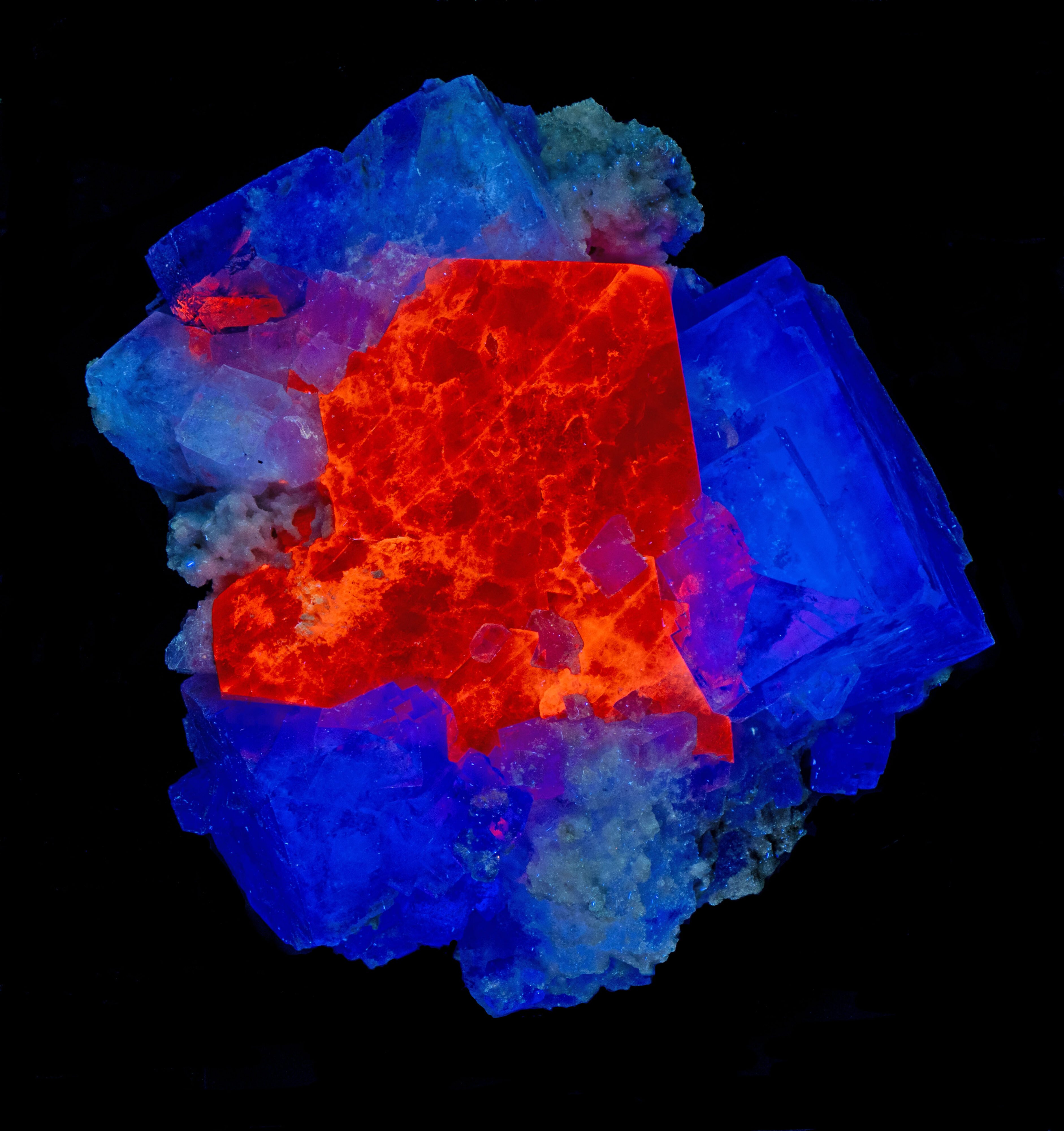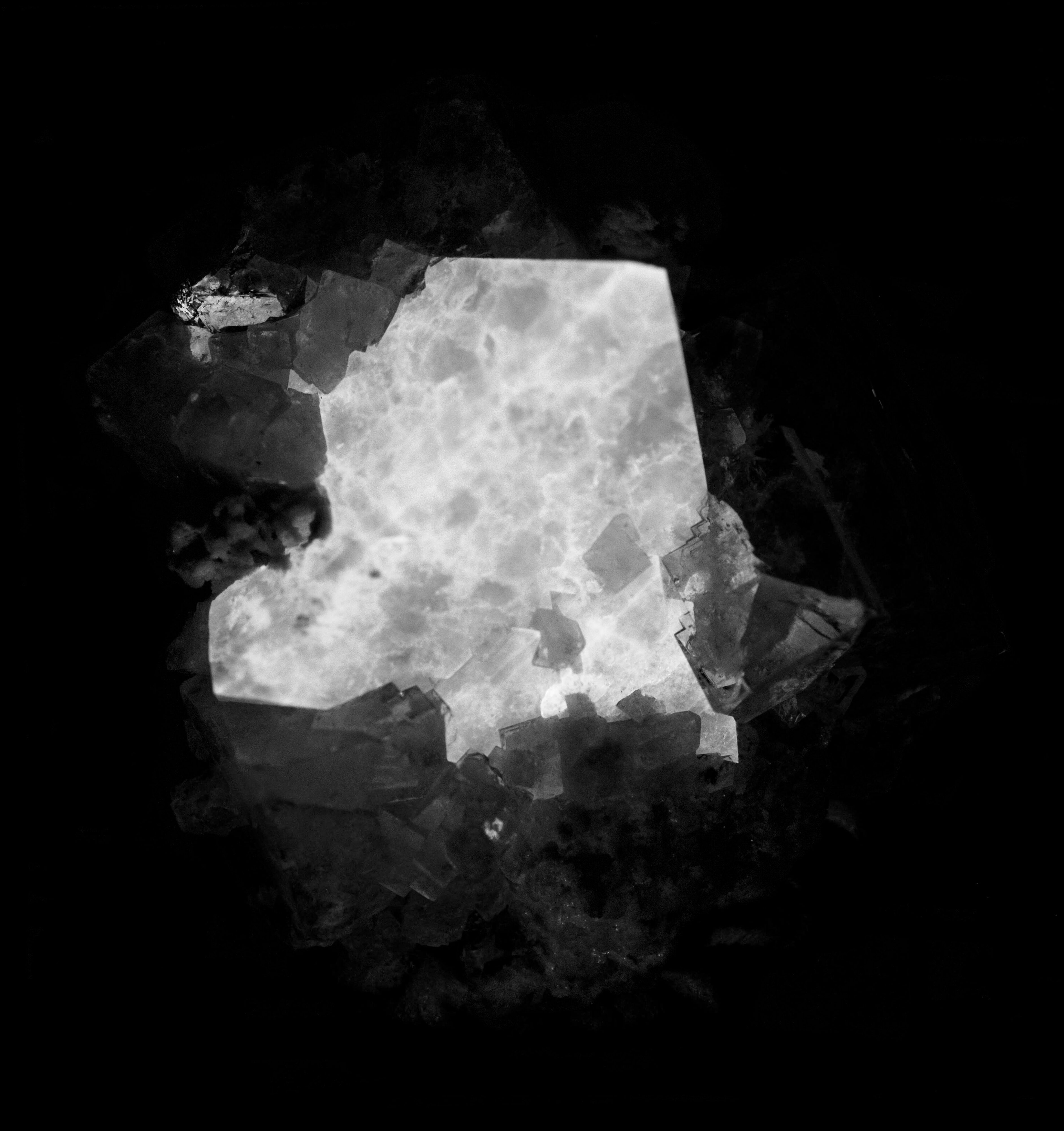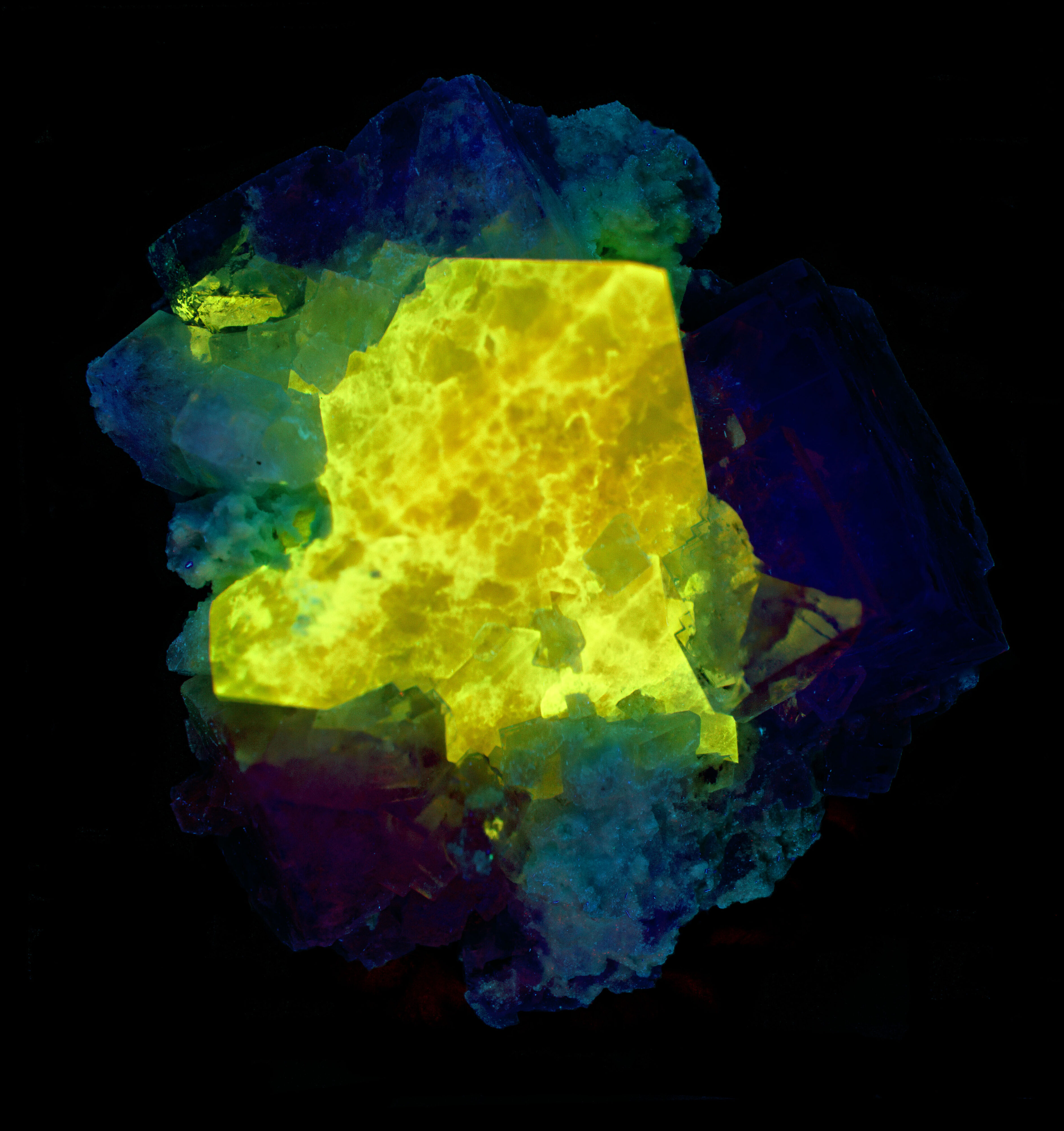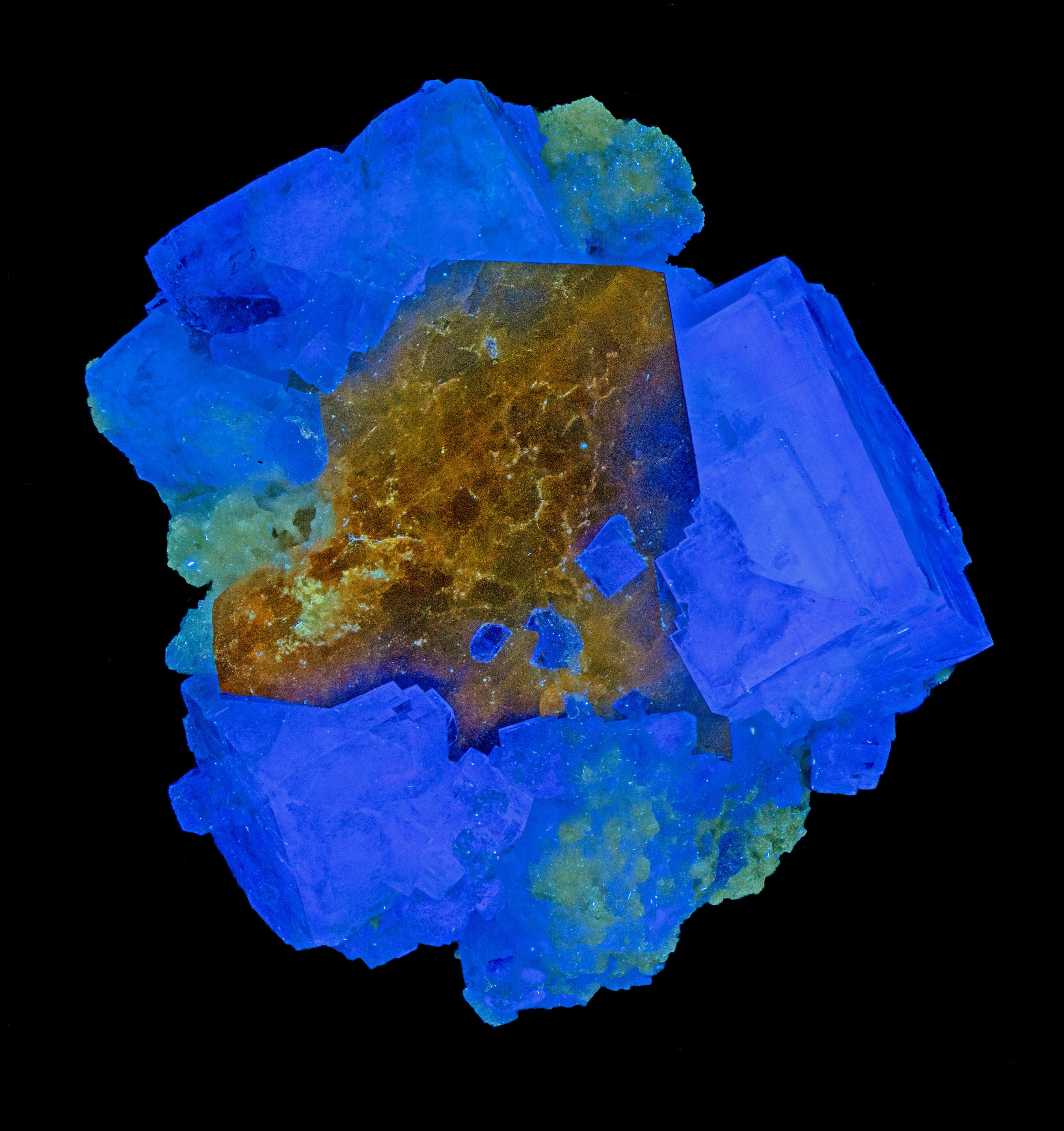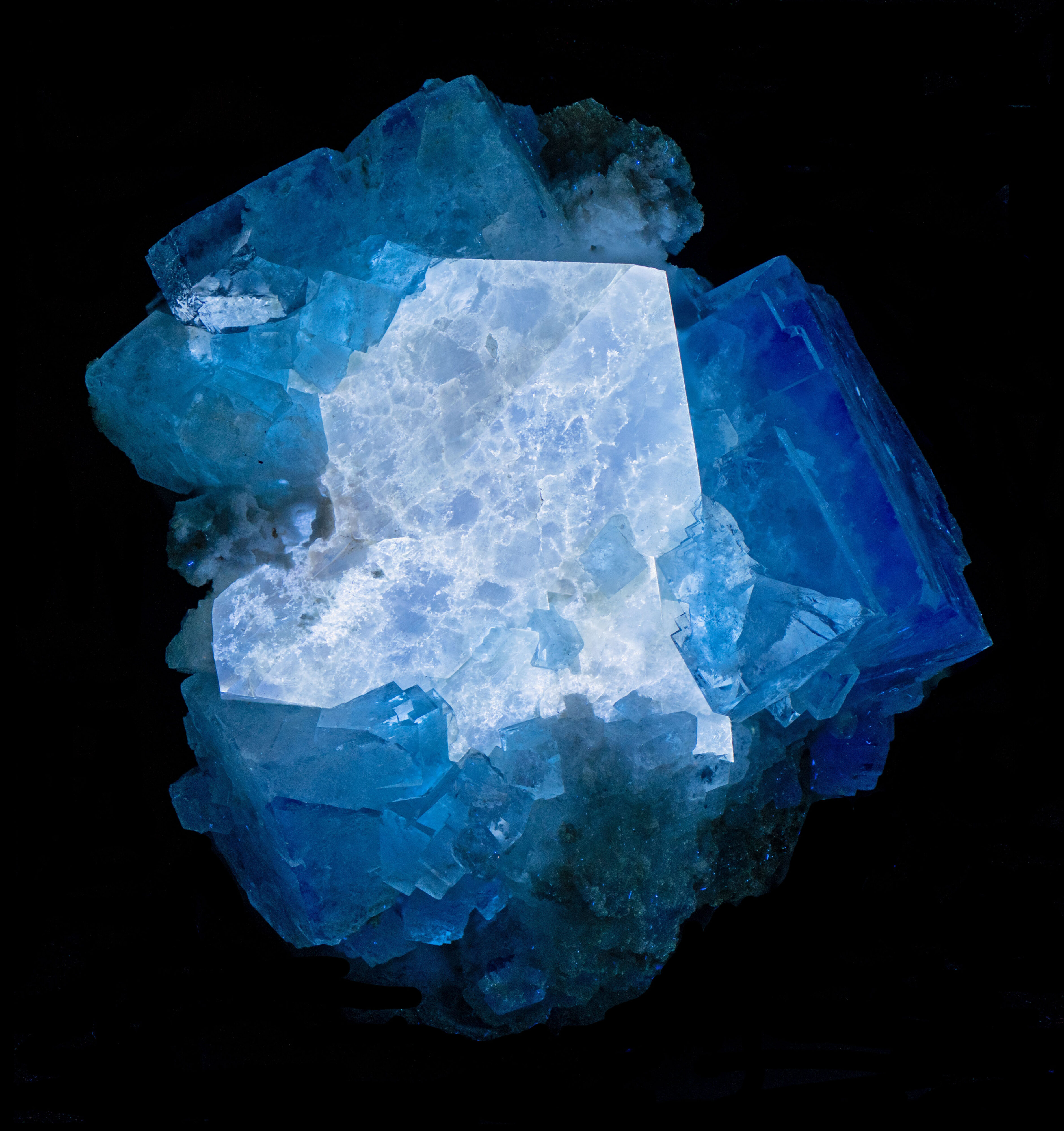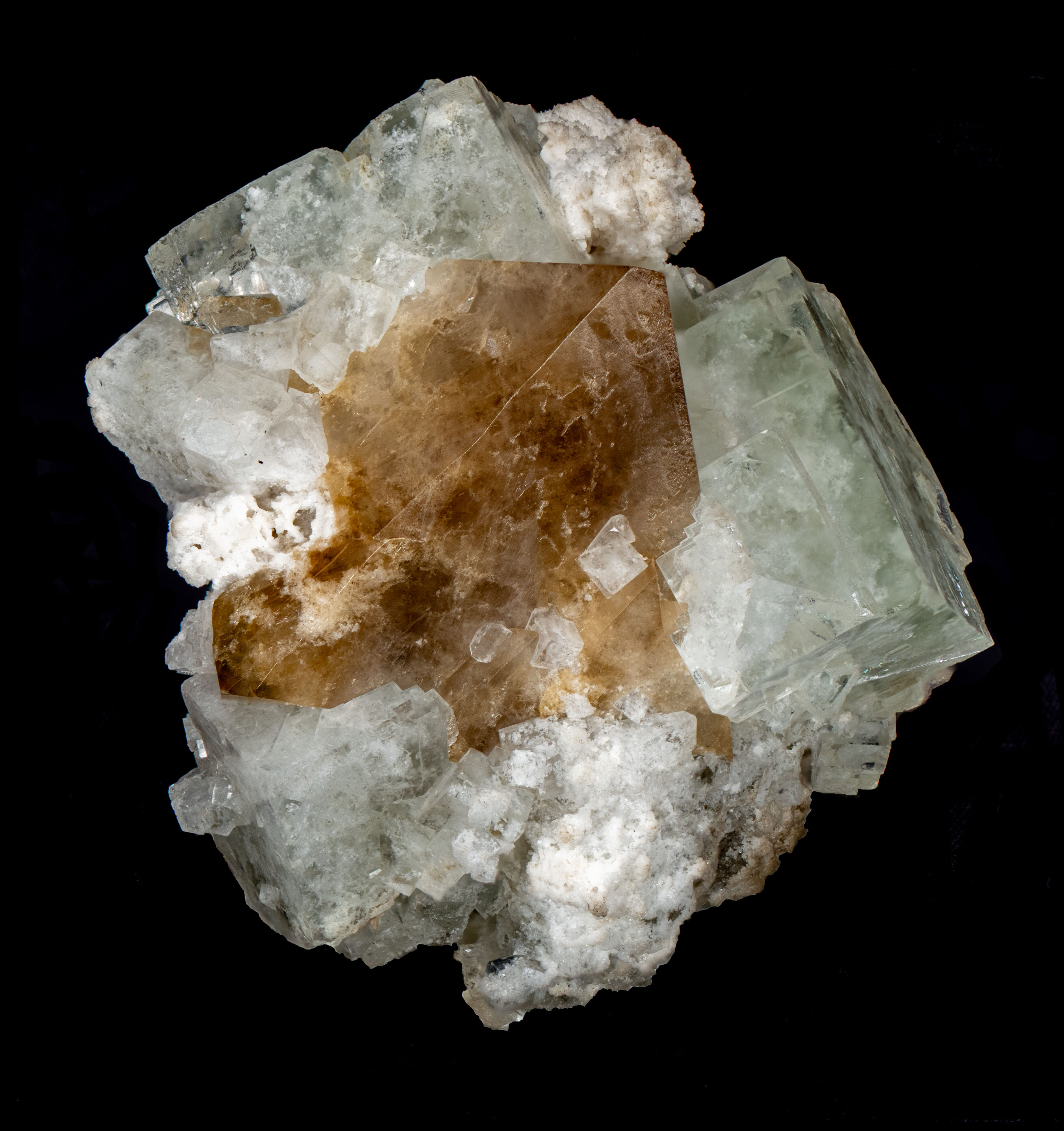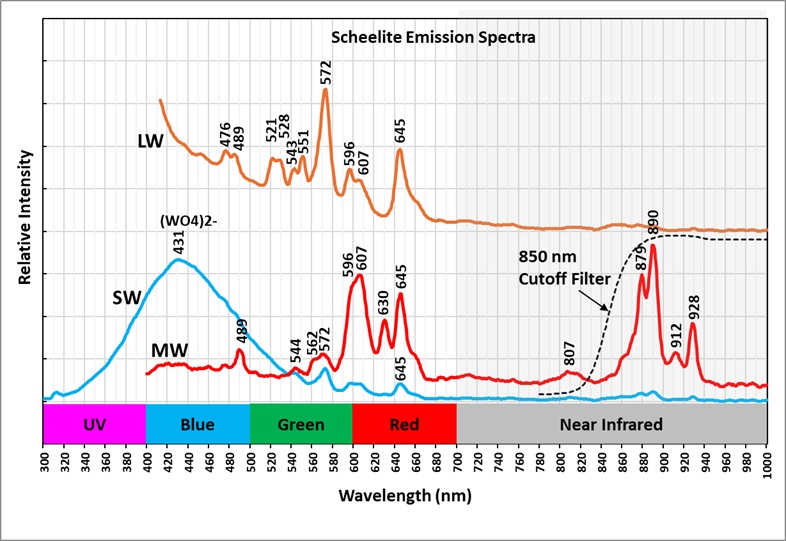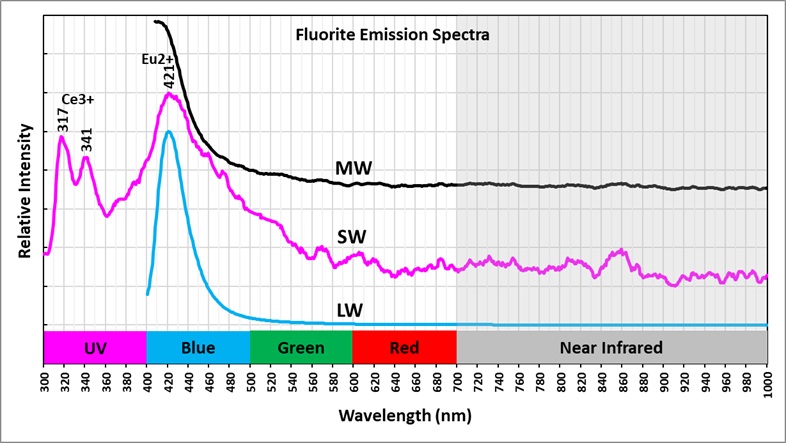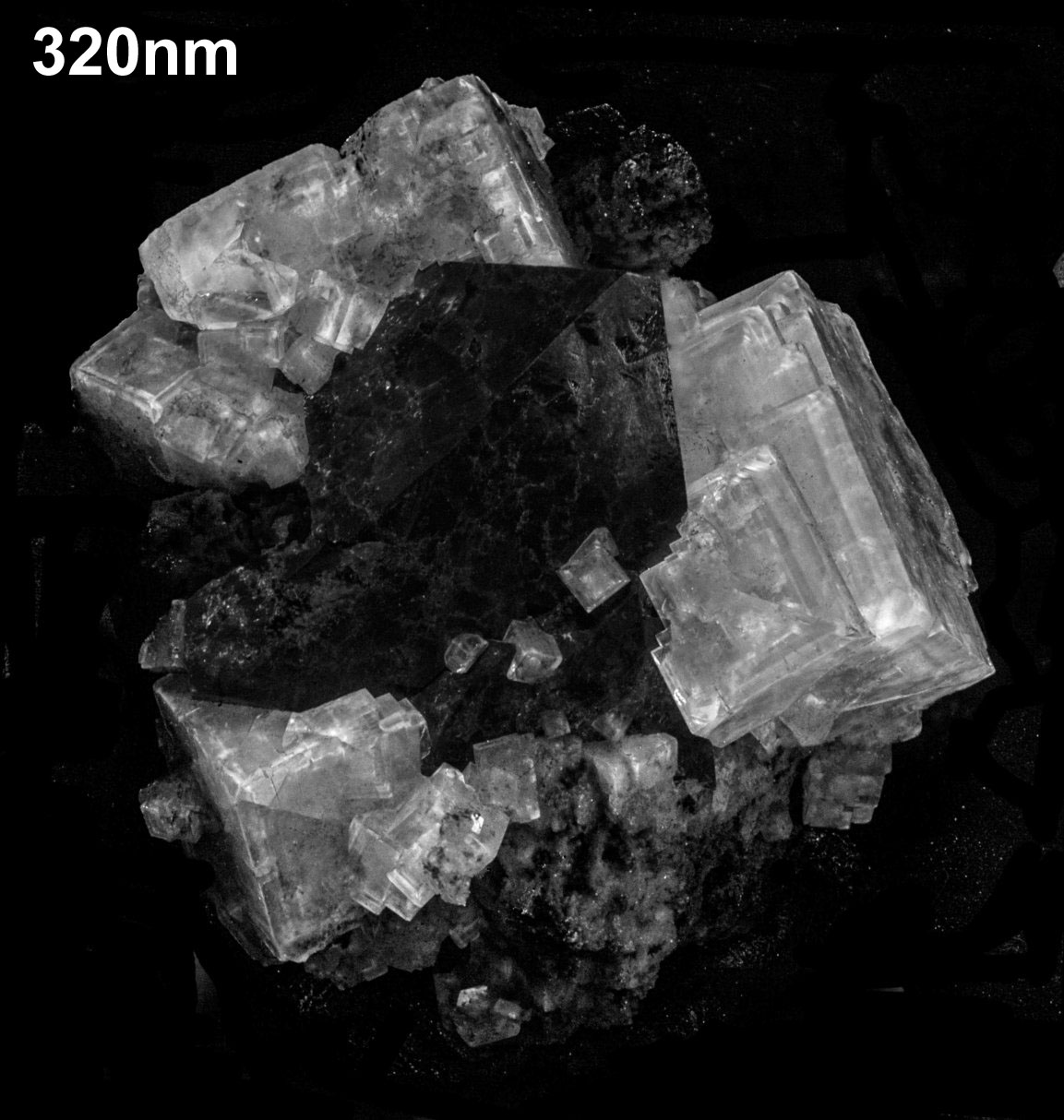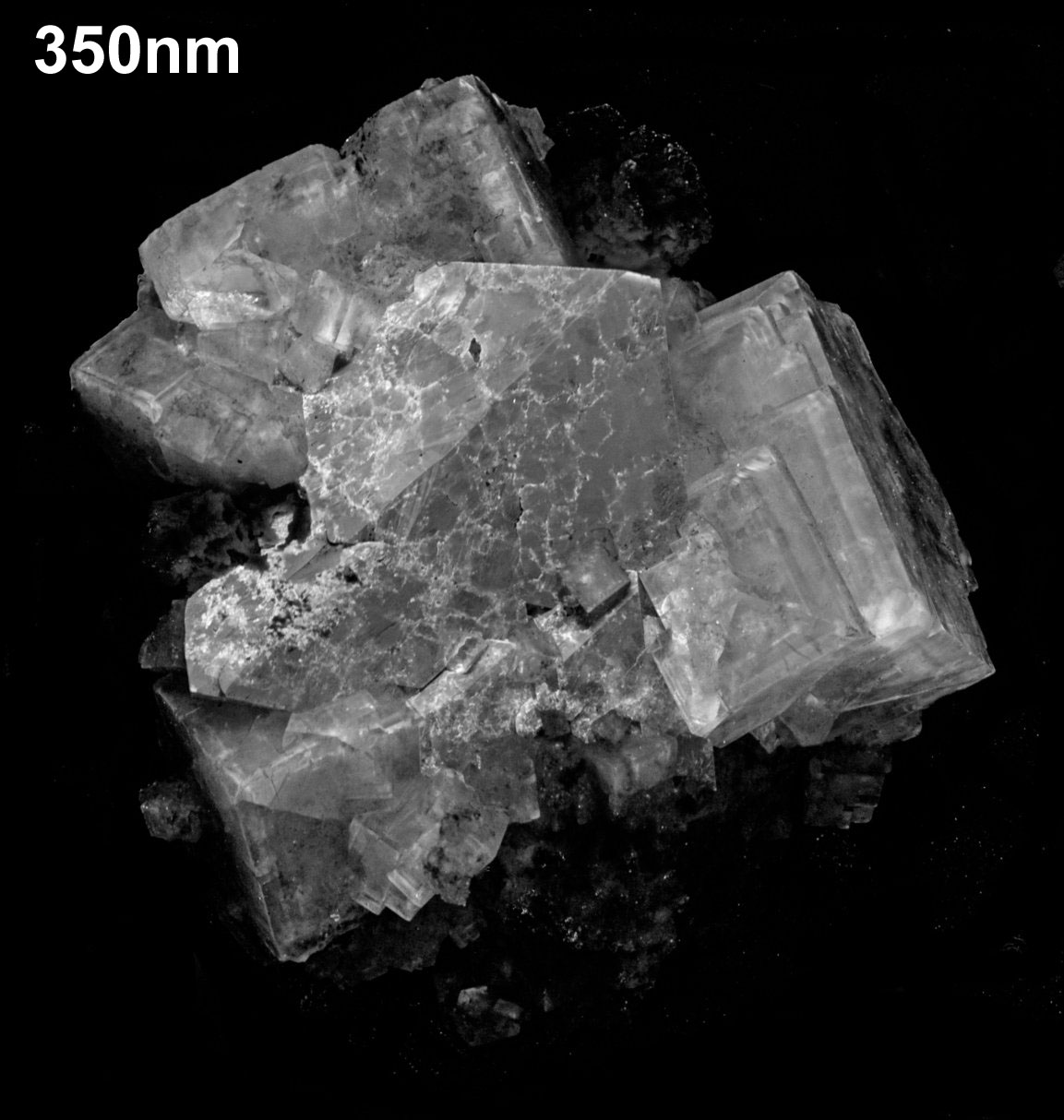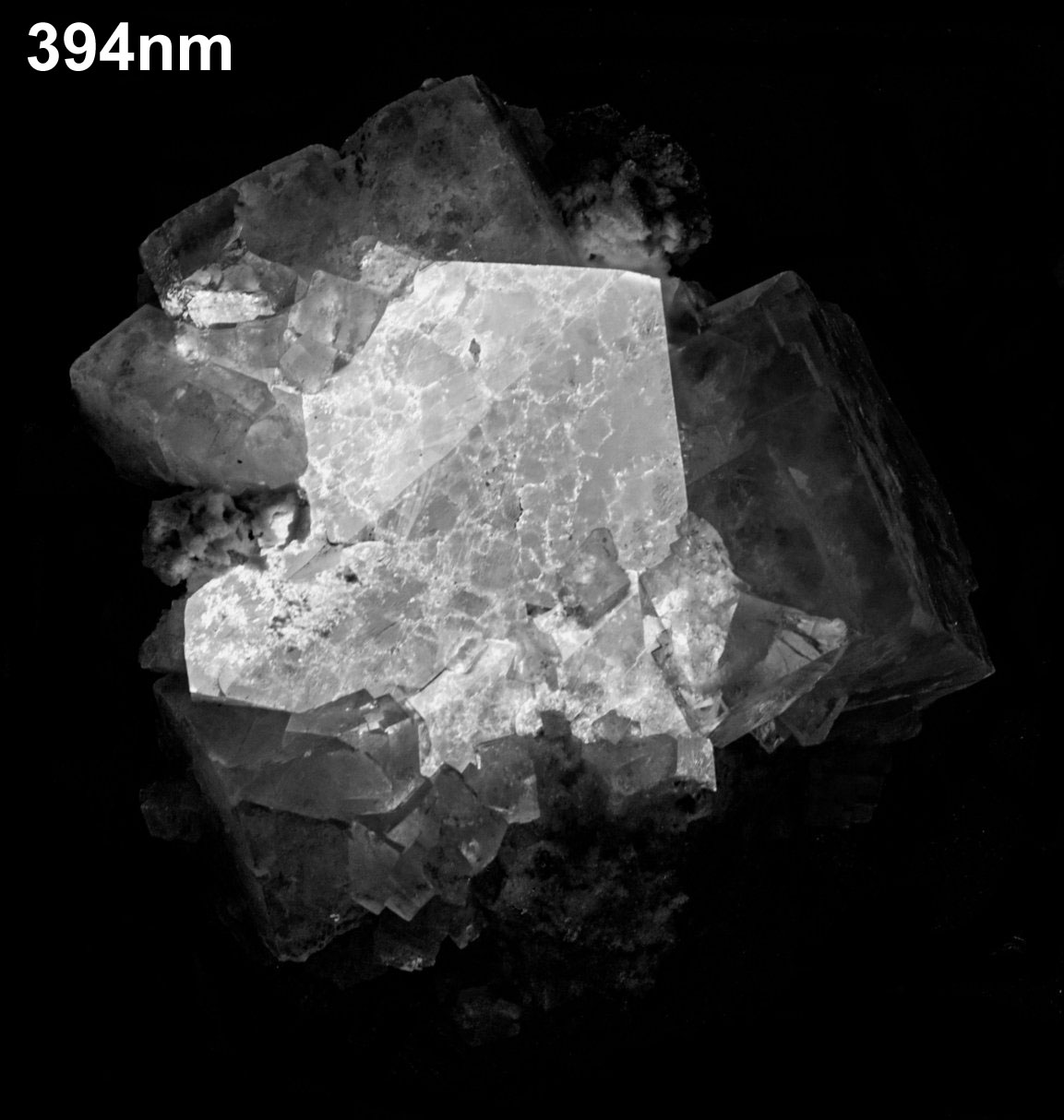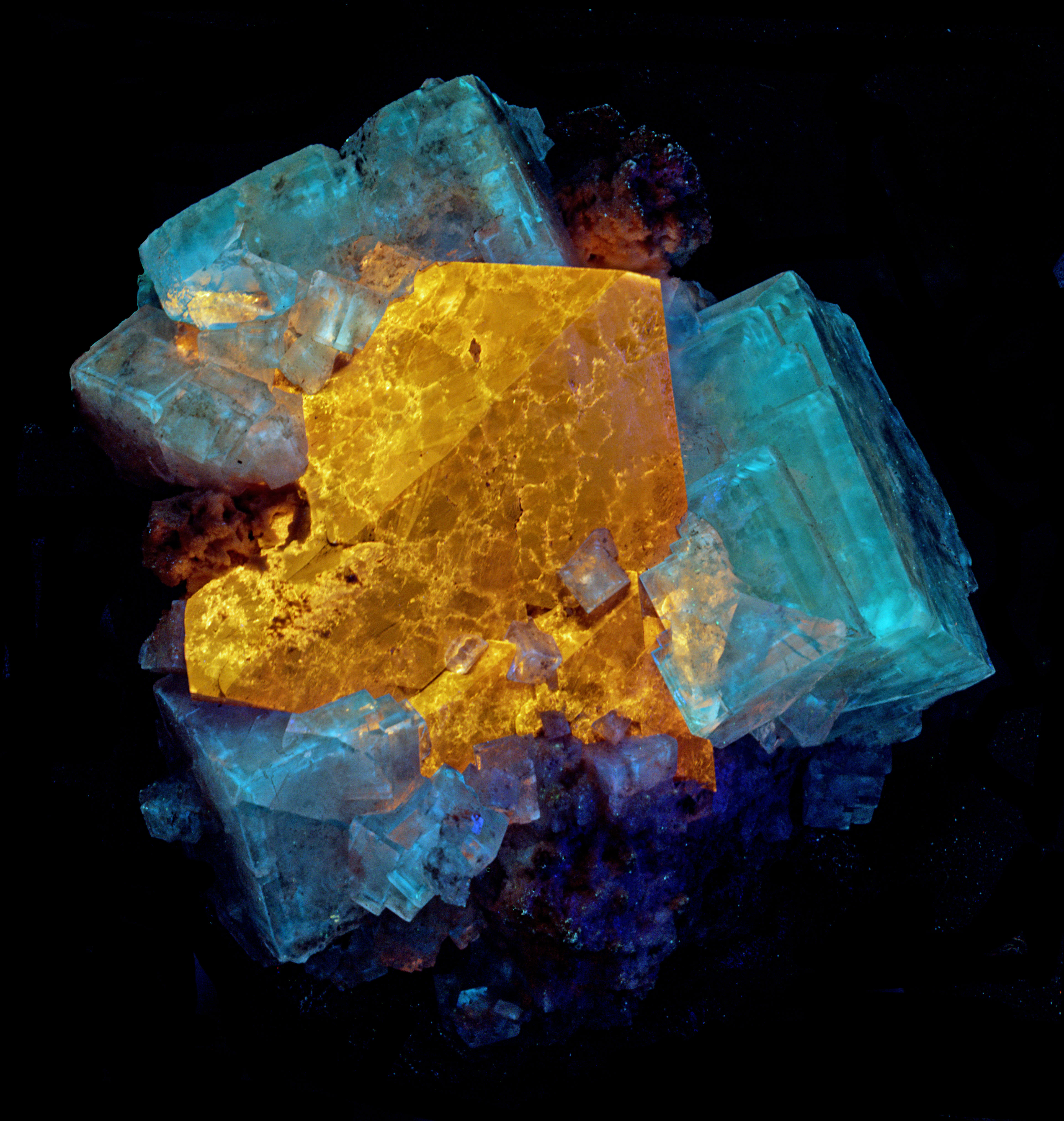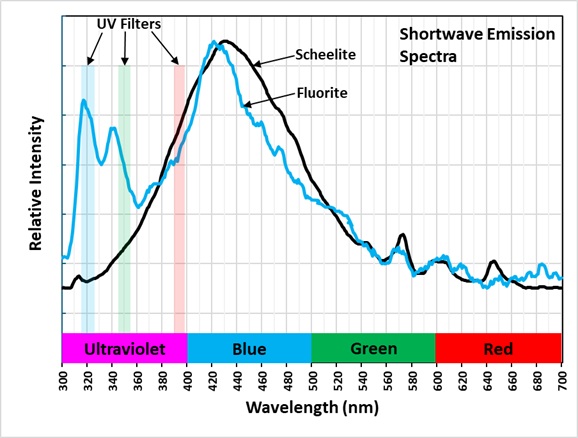Scheelite and Fluorite from Xuebaoding, Pingwu County, Sichuan Province, China
Contributed by: Michael Crawford
Date: Jul 26th, 2025
Locality: Pingwu beryl mine, Huya township, Mount Little Xuebaoding, Pingwu Co., Mianyang, Sichuan, China (See on Mindat)
Size: 5.5 x 5.5 cm
Description:
A specimen of scheelite (CaWO4) and fluorite (CaF2) from the Xuebaoding Mine, Pingwu County, Mianyang Prefecture, Sichuan Province, China. The scheelite crystal in this specimen is unusual in that it changes its fluorescent color under different UV wavelengths. It is yellow brown under longwave illumination, red under midwave illumination, and the typical bluish white under shortwave illumination. Longwave and midwave fluorescent spectra show many sharp peaks that are caused by rare earth activators. The rare earths substitute for the Ca2+ ion. The rare earth elements that cause the peaks are Dy3+ (around 478 nm, 490 nm and 575 nm), Sm3+ (608 nm and 645 nm), Nd3+ (880 nm and 890 nm). Activation caused by dysprosium (Dy3+) dominates the yellow brown longwave fluorescence. Samarium (Sm3+) dominates the midwave red fluorescence. Neodymium (Nd3+) activates near infrared fluorescence under midwave light. An 850 nm cutoff filter and a modified camera was used to acquire the image of the midwave near infrared fluorescence. This image was combined with the green and red visible images of midwave fluorescence to create a color infrared image.
Nearly all scheelite specimens have bluish white fluorescence under shortwave illumination due to intrinsic luminescence from the tungstate ion (WO4)2-. It is a broad fluorescent peak with a maximum around 431 nm.
The fluorite fluorescence is brightest under longwave illumination. It is dim under shortwave illumination. The visible fluorescence is activated by the rare earth, europium (Eu2+), substituting for Ca2+. There is also ultraviolet fluorescence from the fluorite under shortwave illumination. The ultraviolet fluorescence appears as sharp peaks at 317 nm and 341 nm in the shortwave emission spectrum. This fluorescence is activated by the rare earth, cerium (Ce3+).
Three 10 nm narrow bandpass images centered at 320 nm, 350 nm and 394 nm, a special UV lens and a modified camera were used to acquire images of the ultraviolet fluorescence of the scheelite and fluorite. A false color image was created by combining the three narrow bandpass images to blue (320 nm), green (350 nm) and red (394 nm). The broad shortwave fluorescent peak of scheelite has a shoulder that extends into the ultraviolet region. The cerium activated ultraviolet fluorescence has two sharp peaks at 317 nm and 341 nm. The false color image of ultraviolet fluorescence shows this scheelite fluorescent shoulder as orange and the cerium activated fluorite as blue green in the false color image.
Summary of luminescence responses:
Scheelite (Mindat) (RRUFF)
- Fluorescence under Longwave (365nm LED) UV light: Yellow
- Fluorescence under Midwave (305nm LED) UV light: Red
- Fluorescence under Shortwave (255nm LED) UV light: White
- Fluorescence under Longwave (365nm LED) UV light: Blue
- Fluorescence under Midwave (305nm LED) UV light: Blue

